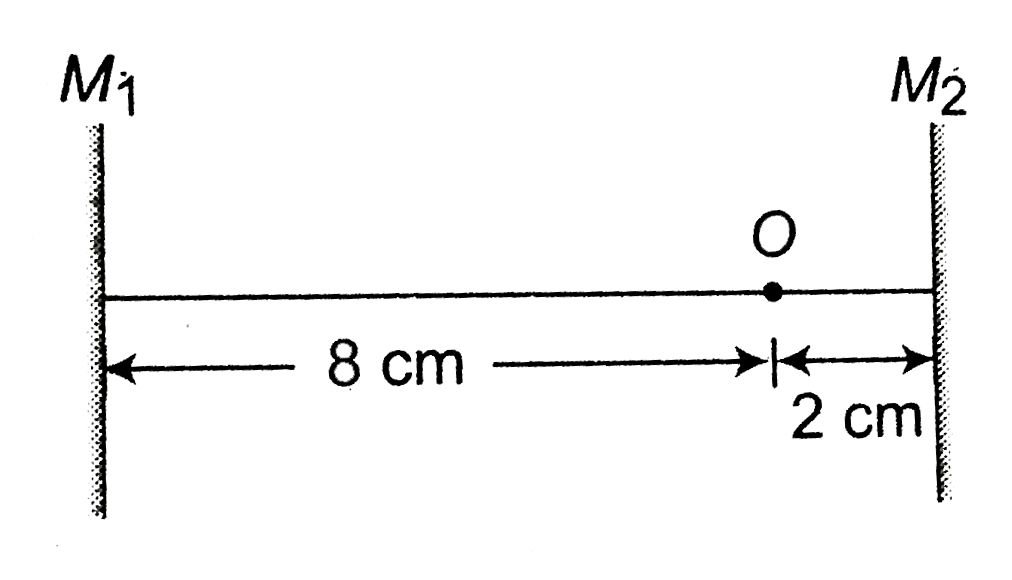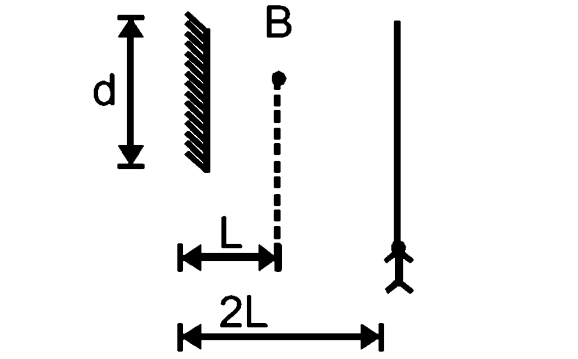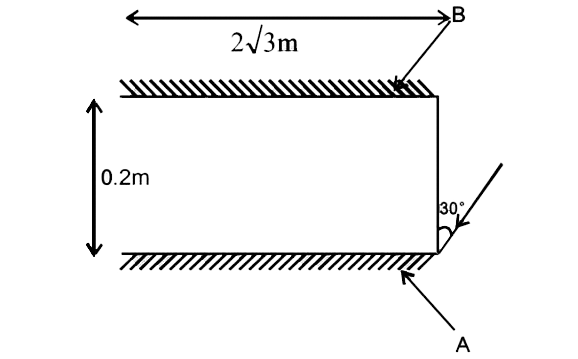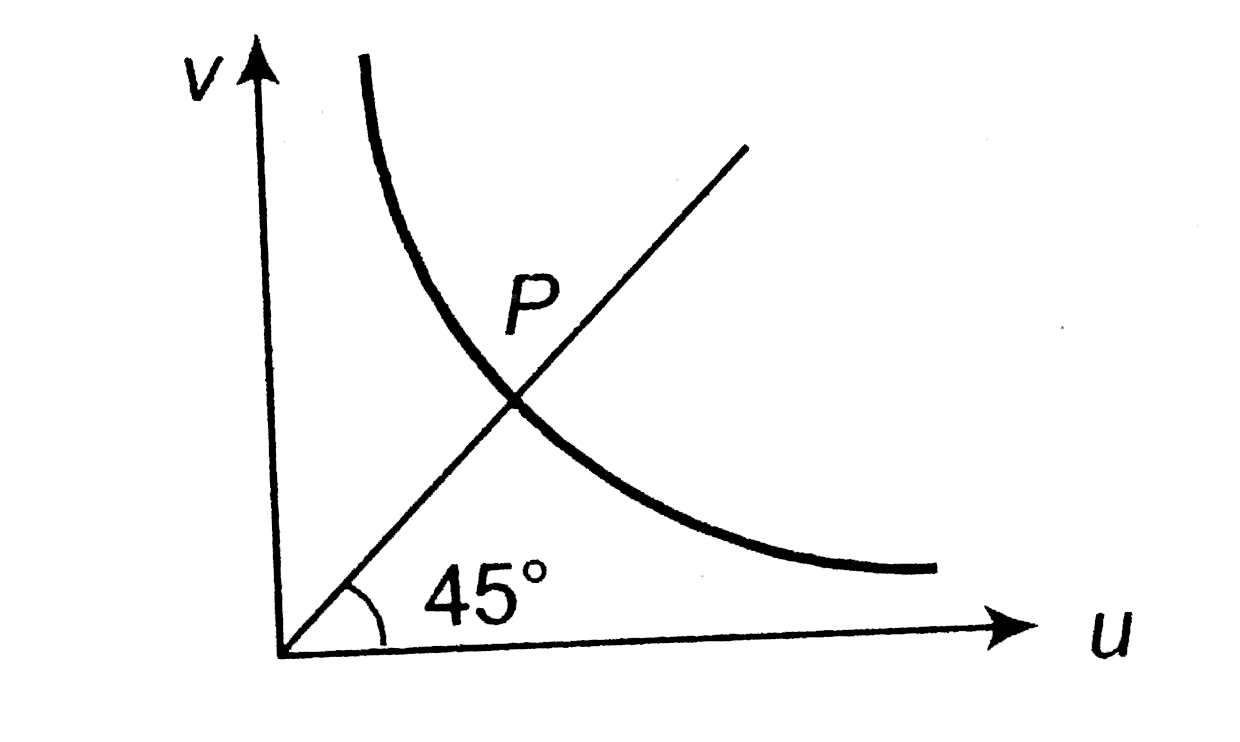Complete Solutions to EXERCISES of chapter REFLECTION OF LIGHT of Class 12 book with complete answers and questions
| Class 12 | PHYSICS |
| Chapter | REFLECTION OF LIGHT |
| CP SINGH | EXERCISES |
| Number Of Questions | 67 |
| Academic Year | 2023-24 |
Choose the correct option:
02:04View SolutionRay optics is valid when characteristic dimensions are
01:54View SolutionThe light reflected by a plane mirrorr may form a real image
03:04View SolutionA point source of light is placed in front of a plane mirror.
02:12View SolutionFigure shows two rays A and B being reflected by a mirror and going as `A^(')` and `B^(')`.
The mirror
 00:33View Solution
00:33View SolutionA thick plane mirror shows a number of images of the filament of an electric bulb. Of these, the brightest image is the
02:03View SolutionA man is 180 cm tall and his eyes are 10 cm below the top of his head. In order to see his entire height right from tow to head, he uses a plane mirror kept at a distance of 1 m from him. The minimum height of the plane mirror required is
03:24View SolutionA boy of height 1.5m with his eye level at 1.4m stands before a plane mirror of length 0.75 m fixed on the wall. The height of the lower edge of the mirror above the floor is 0.8 m. Then ,
02:14View SolutionA man is standing at distance x from a plane mirror in front of him. He wants to see the entire wall in mirror which is at distance. y behind the man. Find the minimum size of the mirror required.
06:10View SolutionWhen a plane mirror is placed horizontally on level ground at a distance of 60 m from the foot of a tower, the top of the tower and its image in the mirror subtend and angle of `90^@` at the eye. The height of the tower is
01:57View SolutionA man 180 cm tall stands 4.5 m in front of a larger vertical plane mirror. Then the angle subtended at the eye by his image In the plane mirror is
02:10View SolutionA plane mirror reflects a beam of light to form a real image, The incident beam should be
01:19View SolutionHow many images will be formed if two mirrors are fitted on adjacent walls and one mirror on ceiling?
02:18View SolutionThe number of images formed by two plane mirrors inclined at `60^@` of an object placed symmetrically between mirror is
02:01View SolutionTwo plane mirrors are inclined to each other at an angle `theta`. A ray of light is reflected at one
mirror and then at the other. Find the total deviation of the ray.06:38View SolutionA ray of light is incident on a plane mirror at an angle of incidence of `30^@`. The deviation produced by the mirror is
01:25View SolutionA ray reflected successively from two plane mirrors incline at a certain angle undergoes a deviation of `240^@`. Then the number of images observable is
02:20View SolutionTwo plane mirrors are placed perpendicular to each other. A ray strikes one mirror and after reflection falls on the second mirror. The ray after reflection from the second mirror will be
02:58View SolutionTwo plane mirrors are inclined at `70^@`. A ray incident on one mirror at incidence angle `theta` after reflection falls on the second mirror and is reflected from there parallel to the first mirror, The value of `theta` is
02:30View SolutionA ray of light makes an angle of `10^@` with the horizontal and strikes a plane mirror which is inclined at an angle `theta` to the horizontal. The angle `theta` for which the reflected ray becomes vertical, is
03:56View SolutionA plane mirrorr makes an angle of `30^(@)` with horizontal. If a vertical ray strikes mirrorr, find the angle between mirrorr and reflected ray
02:58View Solution
Figure shows two plane mirrors and an object O placed between them what will be distance of the first three imgages from the mirror `M_2`?02:39View SolutionA point object is placed midway between two plane mirrors a distance apart. The plane mirrors form an infinite number of images due to multiple reflections. The distance between `n^(th)` order images formed in the two mirrors is
02:58View SolutionAn observer moves towards a plane mirror with a speed of `2(m)/(sec)`. The speed of the image with respect to the observer is
02:40View SolutionA room (cubical) is made of mirros. An insect is moving along the diagonal on the floor such that the velocity of image of insect on two adjacent wall mirrors is `10(cm)/(sec)`. The velocity of image of insect in ceiling mirror is
02:01View Solution
If an object moves towards a plane mirror with a speed v at an angle `theta` to the perpendicular to the plane of the mirror, find the relative velocity between the object and the image.03:10View SolutionA small plane mirror placed at the centre of a spherical screen of radius R. A beam of light is falling on the mirror, If the mirror makes `n` revolution per second, the speed of light on the screen after reflection from the mirror will be
03:20View SolutionA ray of light is incident on the plane mirror at rest the mirror starts turning at a uniform acceleration of `2pi(rad)/(sec^2)`. The reflected ray, at end of `(1)/(4)` sec must have turned through
04:47View SolutionA point source of light B is placed at a distance L in front of the centre of a mirror of width `d` hung vertically on a wall. A man walks in front of the mirror along a line parallel to the mirror at a distance 2L from it as shown in fig. The greatest distance over which he can see the image of the light source in the mirror is
 04:55View Solution
04:55View SolutionTwo plane mirrors A and B are aligned parallel to each other, as shown in the figure. A light ray is incident at an angle 30degree at a point just inside one end of A. The plane of incidence coincides with the plane of the figure. The maximum number of times the ray undergoes reflections (including the first one) before it emerges out is
 03:14View Solution
03:14View SolutionAll the following statements are correct except (for real objects)
02:13View SolutionMark the correct Option:
02:49View SolutionIn image formatiion from spherical mirrors, only paraxial rays are considered because they
02:50View SolutionWhich of the following (referred to a sphericla mirror) do (does) not depend on whether the rays are paraxial or not?
01:09View SolutionCheck the wrong statement (s), if object is real
(i) A concave mirror can give a virtual image
(ii) A concave mirror can give a diminished virtual image
(iii) A convex mirror can give a real image
(iv) A convex mirror can give a diminished virtual image06:12View SolutionA convex mirror is used to form an image of a real object. The image
(i) always lies between the pole and the focus
(ii) is dimished in size
(iii) is erect
(iv) is real03:35View SolutionA concave mirror of focal length `f` in vacuum is placed in a medium of refractive index 2. its focal length in the medium is
01:45View SolutionA concave mirror of focal length `f` produces a real image `n` times the size of the object. The distance of the object from the mirror is
02:46View SolutionAn object `1cm` tall is placed `4cm` in front of a mirrorr. In order to produce an upright image of `3cm` height one needs a
03:35View SolutionA spherical mirror forms an erect image three times the size of the object, If the distance between the object and the image is 80 cm. The nature and the focal length of the mirror are
04:18View SolutionA concave mirror forms the image of an object on a screen. If the lower half of the mirror is covered with an opaque card, the effect would be
01:37View SolutionAn object is placed at 20 cm from a convex mirror of focal length 20 cm. The distance of the image from the pole of the mirror is
00:56View SolutionAn obejct is placed at a distance `2f` from the pole of a convex mirror of focal length `f`. The linear magnification is
01:21View SolutionAn object is placed in from of a convex mirror of focal length 50 cm, if the image is one fourth the size of the object, the distance of the image from the mirror is
02:08View SolutionA concave mirror has focal length 15 cm. Where should an object be placed in front of the mirror so that the image formed is three times the size of the object?
(i) 7.5 cm
(ii) 10 cm
(iii) 17.5 cm
(iv) 20 cm05:06View SolutionThe image of an object placed on the principal axis of a concave mirror of focal length 12 cm is formed at a point which is 10cm more distance form the mirror than the object. The magnification of the image is
02:25View SolutionIn a concave mirror, an object is placed at a distance `d_1` from the focus and the real image is formed aat a distance `d_2` from the focus. Then the focal length of the mirror is :
04:14View SolutionA square wire of side `3.0 cm` is placed `25 cm` away from a concave mirror of focal length `10 cm`. What is the area enclosed by the image of the wire ? The centre of the wire is on the axis of the mirror, with its two sides normal to the axis.
02:42View SolutionFor a concave mirror the magnificant of a real image was found to be twice as greater when the object was 15 cm from the mirror as it was when the object was 20 cm from the mirror. The focal length mirror is
04:34View SolutionA concave mirror forms a real image three times larger than the object on a screen. The object and screen are moved until the image becomes twice the size of the object. If the shift of the object is 6cm, find the shift of screen.
03:48View SolutionThe sun subtends an angle half a degree at the pole of a concave mirror which has a radius of curvature of 15 m. Then the size (diameter) of the image of sun formed by the convace mirror is
03:05View SolutionA thin rod of length `(f/3)` is lying along the principal axis of a concave
mirror of focal length f.Image is real , magnified and inverted and one of the end or rod coincides with its image itself. Find length of the image.02:46View SolutionA short linear object of length b lies along the axis of a concave mirror of focal length f at a distanee u from the pole of the mirror. The size of the image is approximately equal to
02:41View SolutionA piece of wire bent into an L shape with upright and horizontal portion of equal lengths 10 cm each is placed with the horizontal portion along the axis of the concave mirror towards pole of mirror whose radius of curvature is 10 cm. If the bend is 20 cm from the pole of the mirror, then the ratio of the lengths of the images of the upright and horizontal portion of the wire is
05:02View SolutionA cube of side `2m` is placed in front of a concave mirrorr of focal length `1m` with its face `A` at a distance of `3m` and face `B` at a distance of `5m` form the mirrorr, The distance between the images of face `A` and `B` and height of images of `A` and `B` are respectively.
 06:27View Solution
06:27View SolutionThe firld of view is maximum for
02:17View SolutionA convex mirror of length 1m and a plane mirror are facing each other, if the distance between them is 1m, their images are separated by
02:13View SolutionAn object is placed in front of a convex mirror at a distance of 50cm. A plane mirror is introduced covering the lower half of the convex mirror. If the distance between the object and the plane mirror is 30cm, it is found that there is no parallax between the images formed by the two mirrors. What is the radius of curvature of the convex mirror?
01:41View SolutionA convex mirror and a concave mirror of radius 10cm each are placed 15cm apart facing each other. An object is placed midway between them. If the reflection first takes place in the concave mirror and then in convex mirror, the position of the final image is
03:01View SolutionA car is fitted with a convex side-view mirror of focal length 20 cm. A second car 2.8m behind the first car is overtaking the first car at a relative speed of 15 `m/s`. The speed of the image of the second car as seen in the mrror of the first one is:
02:10View SolutionAn object is moving towards a concave mirror of focal length 24 cm. When it is at a distance of 60 cm from the mirror, its speed is `9 cm//s`. The speed of its image at that instant , is
02:35View SolutionFor a concave mirrorr, if real image is formed the graph between `(1)/(u)` and `(1)/(v)` is of the form
02:00View SolutionWhich of the following graphs is the magnification of a real image against the distance from the focus of a concave mirrorr ?
02:28View SolutionThe graph shows variation of `v` with change in `u` for a mirrorr. Points plotted above the point `P` on the curve are for values of `v`
 02:30View Solution
02:30View SolutionAs the position of an object `(u)` reflected from a concave mirrorr is varies, the position of the image `(v)` also varies. By letting the `u` changes from `0` to `+oo` the graph between `v` versus `u` will be
02:32View SolutionThe graph between `u` and `v` for a convex mirrorr is
02:51View SolutionA light ray travelling parallel to the principal axis of a concave mirror strikes the mirror at angle of incidence `theta`. If radius of curvature is `R`, then after reflection, the ray meets the principal axis at a distance d from the centre of curvature then d is
03:04View Solution
EXERCISES questions and complete solutions for chapter REFLECTION OF LIGHT of CP SINGH PHYSICS (HINGLISH) of Class 12
